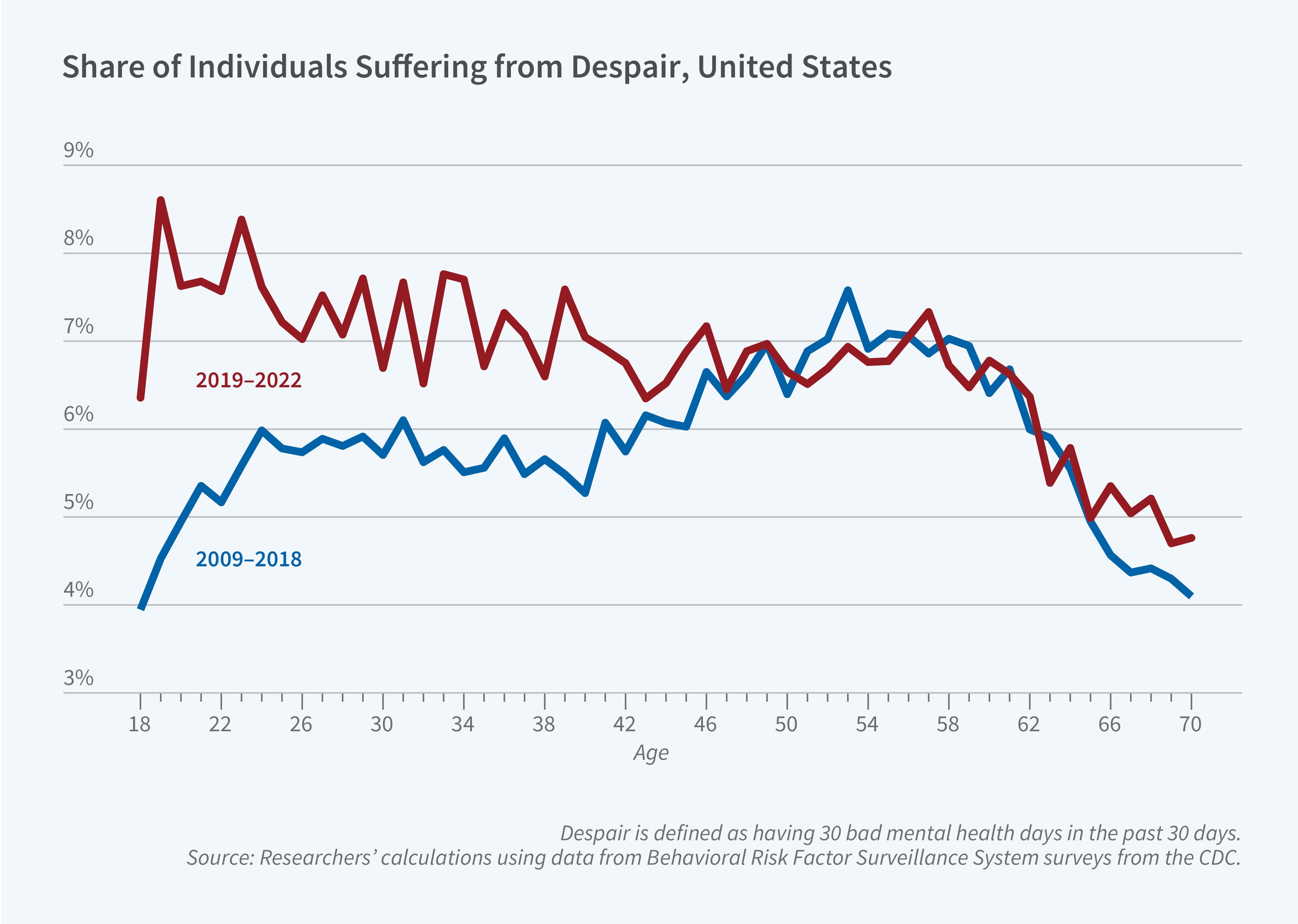The Declining Mental Health of Youth

For many years, surveys and other evidence showed that life satisfaction, perceived financial security, sense of worthwhileness, and happiness declined in early adulthood, reached a low point in midlife, and then rose in later life. This U-shaped pattern in wellbeing was mirrored by a hump-shaped pattern for despair, psychiatric admissions, and antidepressant use that peaked in midlife. A new study by David G. Blanchflower, Alex Bryson, and Xiaowei Xu, The Declining Mental Health of the Young and the Global Disappearance of the Hump Shape in Age in Unhappiness (NBER Working Paper 32337), finds that the deterioration of mental health among young people in recent years has altered these historical patterns.
Historically, the incidence of despair peaked in midlife, but recent increases in despair among the young have replaced this pattern with a steady age-related decline.
The researchers analyze survey data from the US (1993–2022) and the UK (2009–2021) for individuals aged 18–70. They find that the proportion of individuals in the US who suffered from despair — those who reported 30 bad mental health days in the past 30 days — nearly doubled from 3.7 percent in 1993 to 7 percent in 2023, with the effect concentrated among those aged 18–24. In the UK, rates of despair for young men and women doubled, with young men’s despair surpassing that of older age groups in 2019.
The hump-shaped pattern of despair across an individual’s lifespan was evident in both the US and the UK from 2009 to 2018. However, this pattern appears to have shifted after 2018, replaced by a decline in despair with age driven by gradually rising despair levels since 2011 among those under 45, particularly those in their mid-20s. The COVID-19 pandemic exacerbated the effects, particularly in the UK where young people experienced worse mental health outcomes due to lockdowns and increased social isolation.
Expanding their analysis to 34 countries from 2020 to 2023 using data from the Global Mind Project, the researchers find that the hump-shaped pattern of despair has disappeared globally as well. In 2023, 27 percent of individuals were “distressed and struggling” with their mental health. Worldwide, the mental health of young women under 25 is worse than that of young men. The researchers also find that mental health is worse among the less educated, women, the unemployed, and those unable to work.
Potential explanations for the decline in mental wellbeing among young people include the effects of the Great Recession on new cohorts entering the labor market, the underfunding of mental health services, and the impact of smartphones on young people’s self-perceptions and social comparisons.
— Leonardo Vasquez
The researchers thank the United Nations for financial support.


